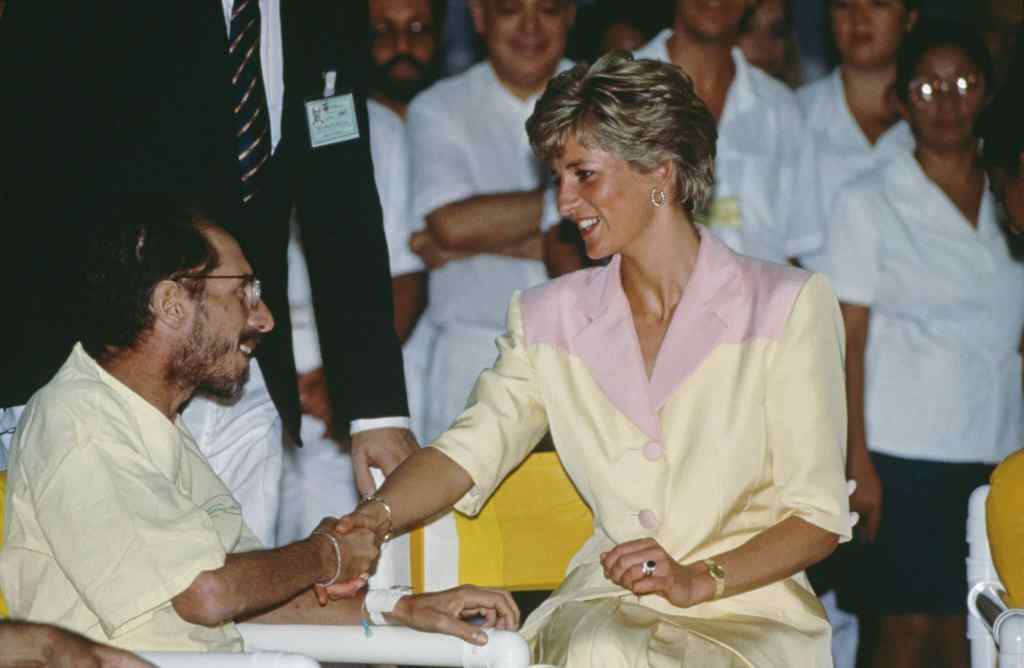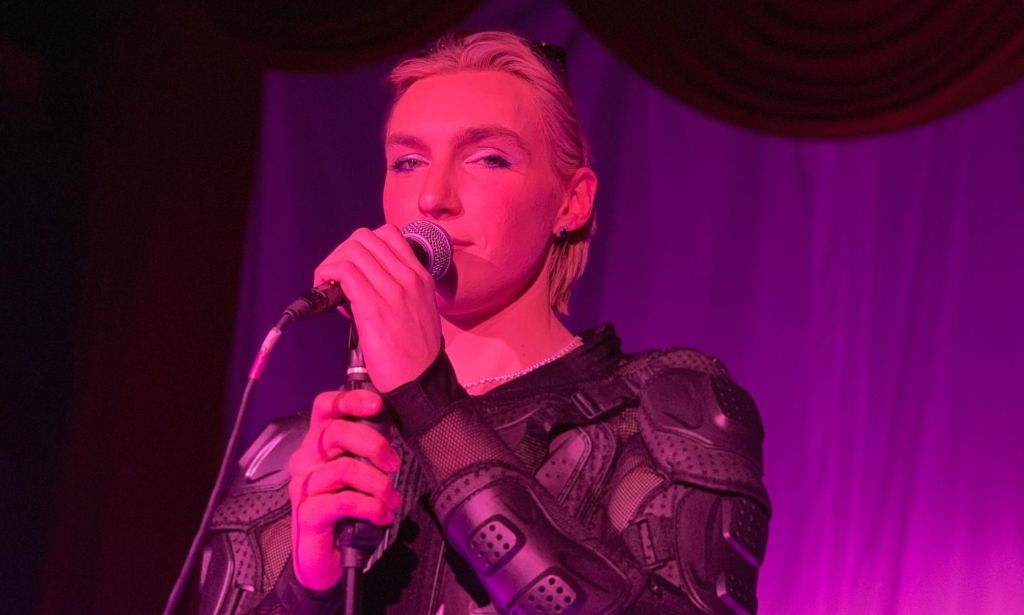Diana star Peter Smith on Princess Diana’s legacy: ‘Queer people saw themselves in her’

Diana star Peter Smith on Princess Diana’s legacy: ‘Queer people saw themselves in her’ (Sandy Honig/Brandon Barnhart/Noah Eberhart)
The life of Diana, Princess of Wales has been chewed over and spat out into countless films, TV series and biographies, but never has it been unravelled with a perspective as unique as Peter Smith’s.
With their stage show Peter Smith’s Diana, the non-binary, New York-based cabaret star has done away with the Princess Diana iconography we’re used to being force-fed. This is an all-singing, all-dancing introspection, looking at how we all – particularly queer people – saw ourselves in Diana.
The British royal was one of the first victims of the 24-hour news cycle, and a mental health activist before the concept was even thought up. She was a trailblazer who brought attention to AIDS in a world of celebrities and politicians who didn’t want to touch the issue.
For the first time, Peter Smith’s Diana has landed in the princess’s home country at London’s Soho Theatre. It’s a chaotic, fascinating, occasionally hilarious and sometimes confusing look at who Diana could’ve been, and what she still is to some people. This is no Princess Diana impersonation.
PinkNews: As someone who grew up in America’s midwest, what was your first knowledge of Princess Diana?
Peter Smith: I woke up one day, [in the] last days of August, and my mum was crying, and she said Diana died. And I didn’t know who she was talking about, really. And it was like, “Oh, this woman was really important to my mum, and apparently, all my friend’s mums”. Then I found out no one actually knew her, and that she just felt so personal to a lot of women.
Her life had such a profound impact on people at the time, but that adoration has trickled down to today’s queer community. Why do you think that is?
That generation that was lost to AIDS, the people who were still alive when she died, [she] was their one real global champion. The conversation between queer generations – there wasn’t one because there was a massive genocide of gay people.
We’ve been grasping for that connection between generations, and now, she’s come back in this way, like “OK, we can meet here. We know that this woman was really pretty and fabulous and did some amazing s**t, and also she took care of our fallen soldiers”.

Peter Smith’s Diana is loosely inspired by Diana, but is there a broader message or a concept you wanted people to understand?
I think people will interpret it as they interpret it, because they all have very specific connections to the woman.
The show is for queer people and for women. Yes, Diana is for everybody, but I do make work for queer people and femmes. Diana, to me, what she did was, like: “Look at me, look at me. Great: you’re looking at me. Here’s AIDS. You’re looking at me? OK, here are bombs”.
That’s what the show is about. It highlights things that I think people our age are dealing with, like the phone, dealing with all of these international horrors that we’re inundated with, over and over again.
She was the first person whose physical body went through the 24-hour news cycle. Now we’re all dealing with the physical effects of the 24-hour news cycle. I’m really not interested in reviving her personal life and telling stories that we’ve all heard so many times.
She used her star power, she used her platform to bring up really heavy s**t. So that’s what the show is about.
There are also a lot of references to the contemporary news of today. Elon Musk, Kevin Spacey, Ghislaine Maxwell – whose controversies came about long after Diana died. Was that to show that she was the nucleus of how we view celebrity status today?
Yeah, and if she were alive today, would she have to comment on these things, you know?
I’m using her as this sparkly thing to talk about stuff that is contemporary and useful. The show is called Peter Smith’s Diana. My name is first and this is my version of this woman.
What her contemporary function I think should be, as a queer person, is to not be so heavily inundated with nostalgia and what she was wearing, but still use her as this spirit to draw people’s attention to what is going on.

If she were alive now, what do you think her outlook would be on the world’s current state of affairs?
I mean, I love how people, and women especially and queer people, sort of saw themselves in her. And it was like, ‘she’s just like me’, you know? My show is sort of this flickering of “Well, am I her? Well, am I myself? Am I kind of just someone on the internet?” This flickering of delusion and ego and self.
She didn’t have anybody she could really trust, but she was working hard on being able to speak in public. I think if she were alive, she would either have a talk show [or] she would maybe have seen social media for what it is [in] the beginning and would have been like: “F**k this!”
This interview has been condensed for length and clarity.
Peter Smith’s Diana is on stage at London’s Soho Theatre until 29 July.

